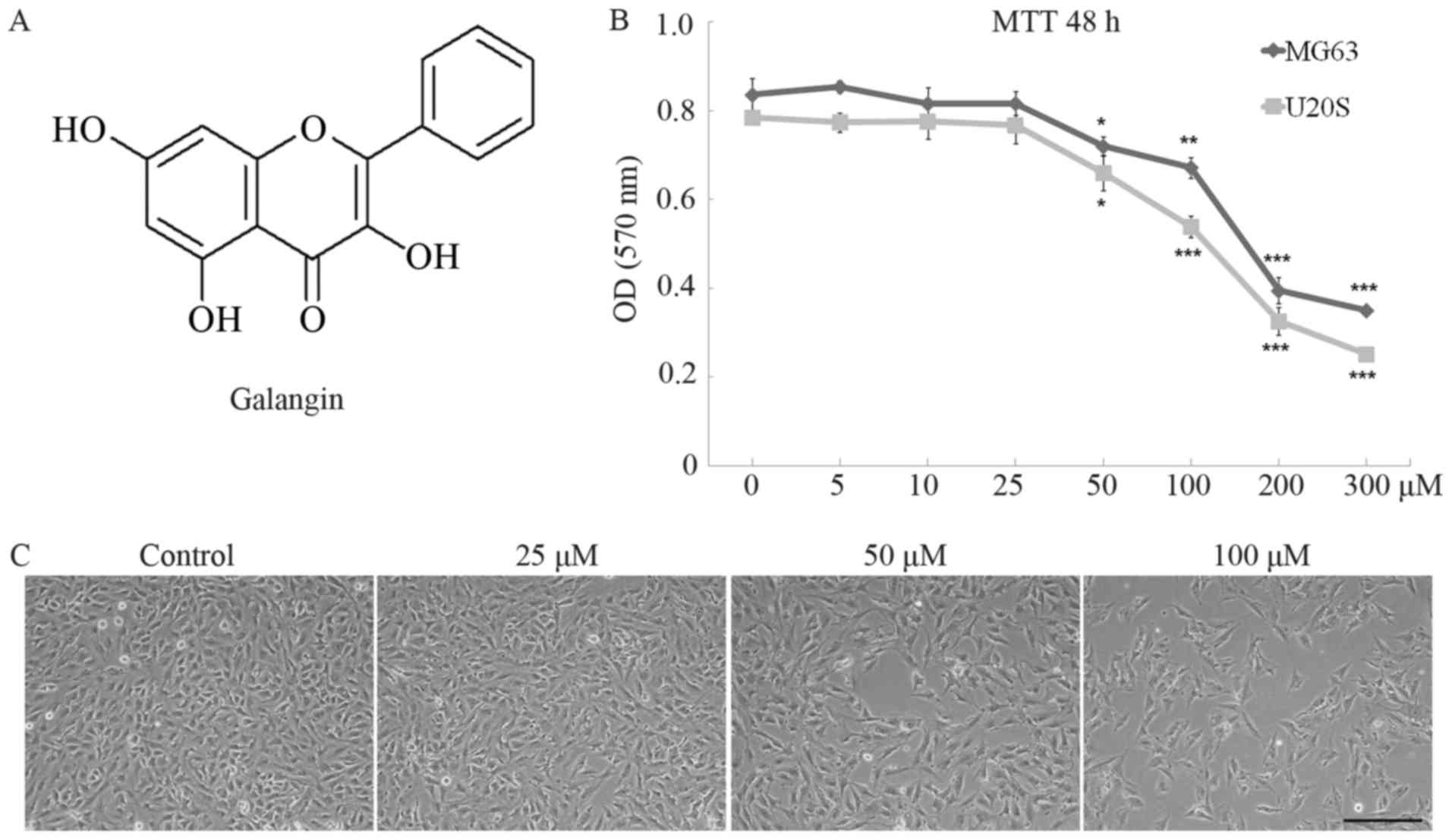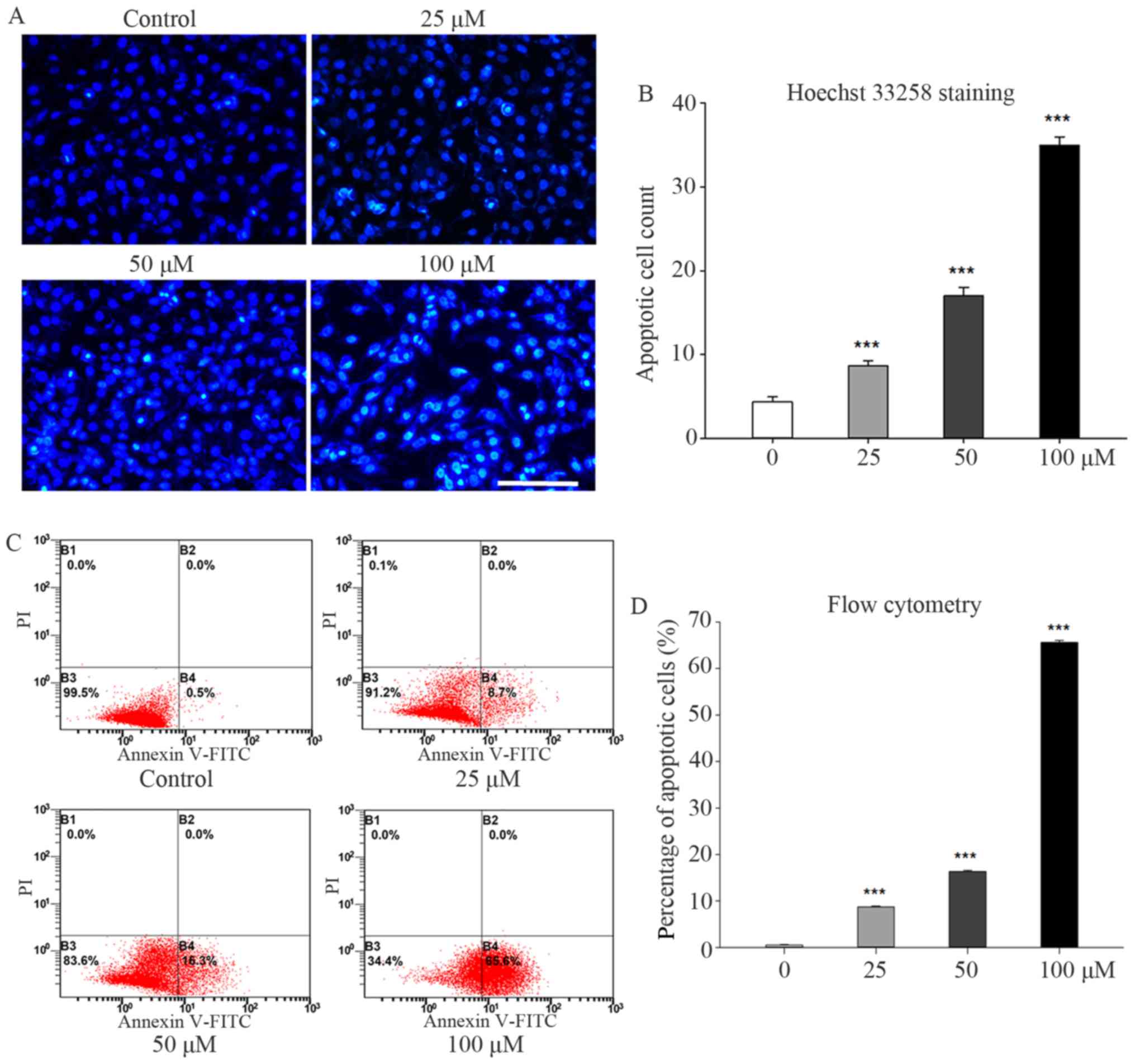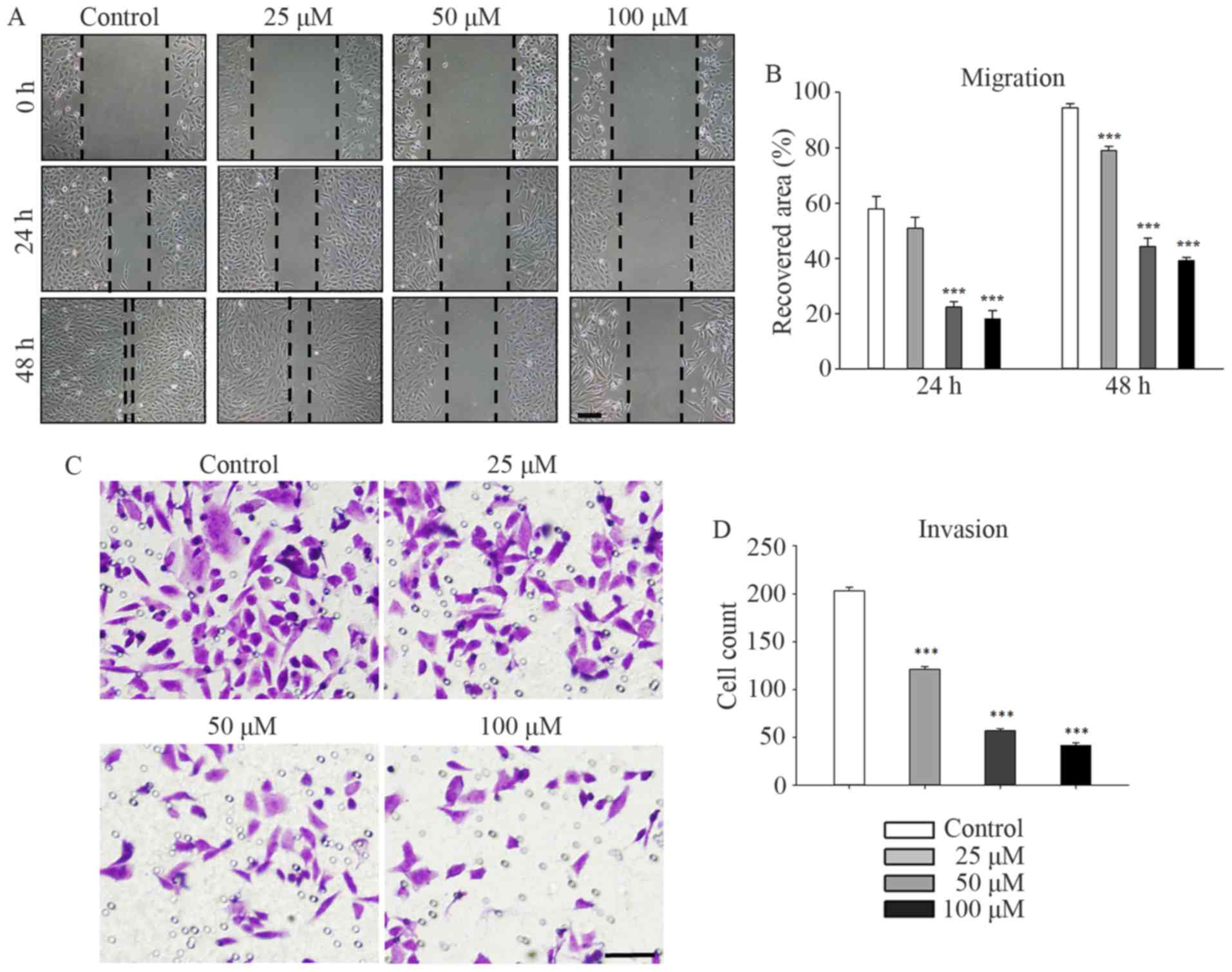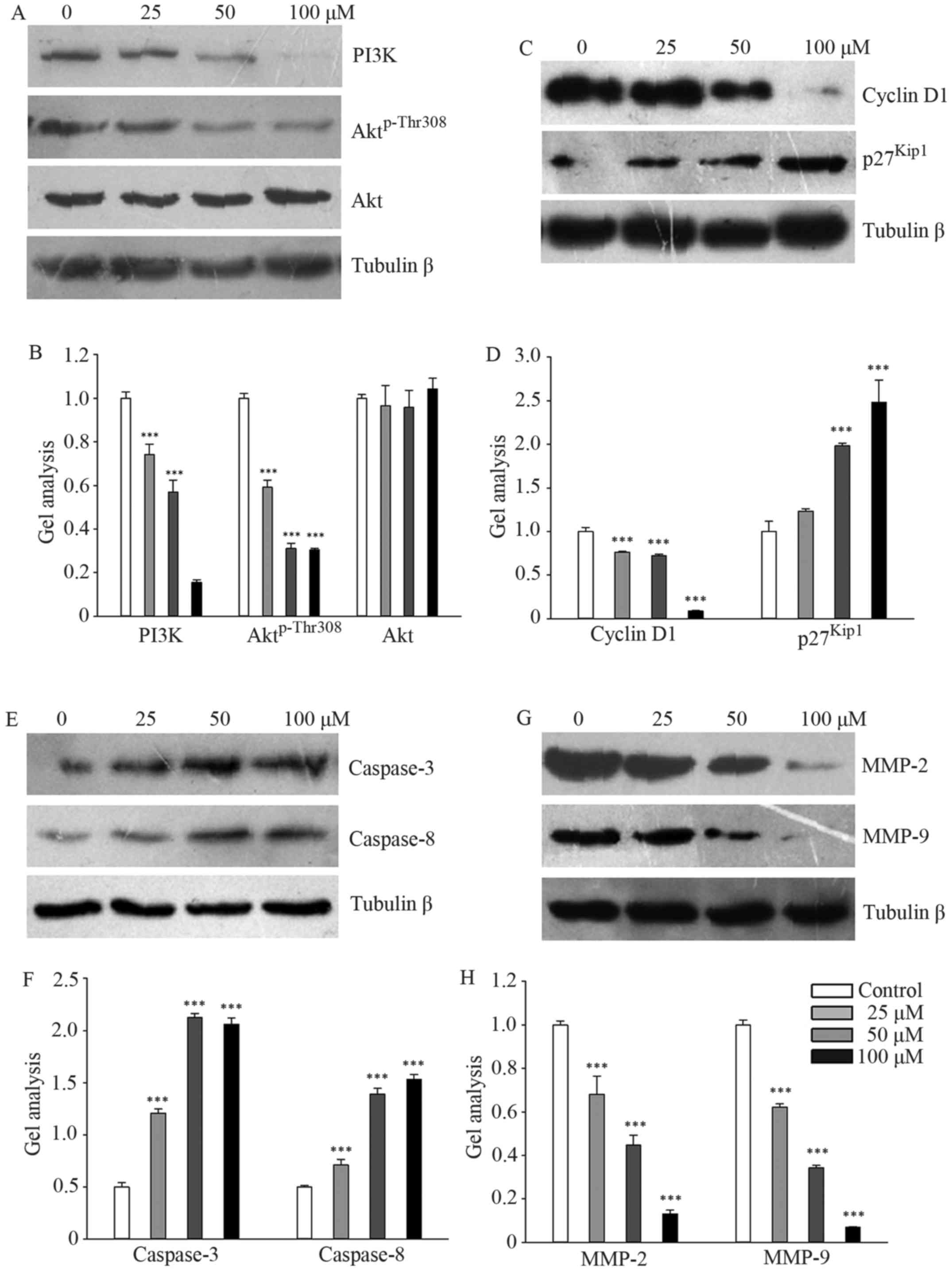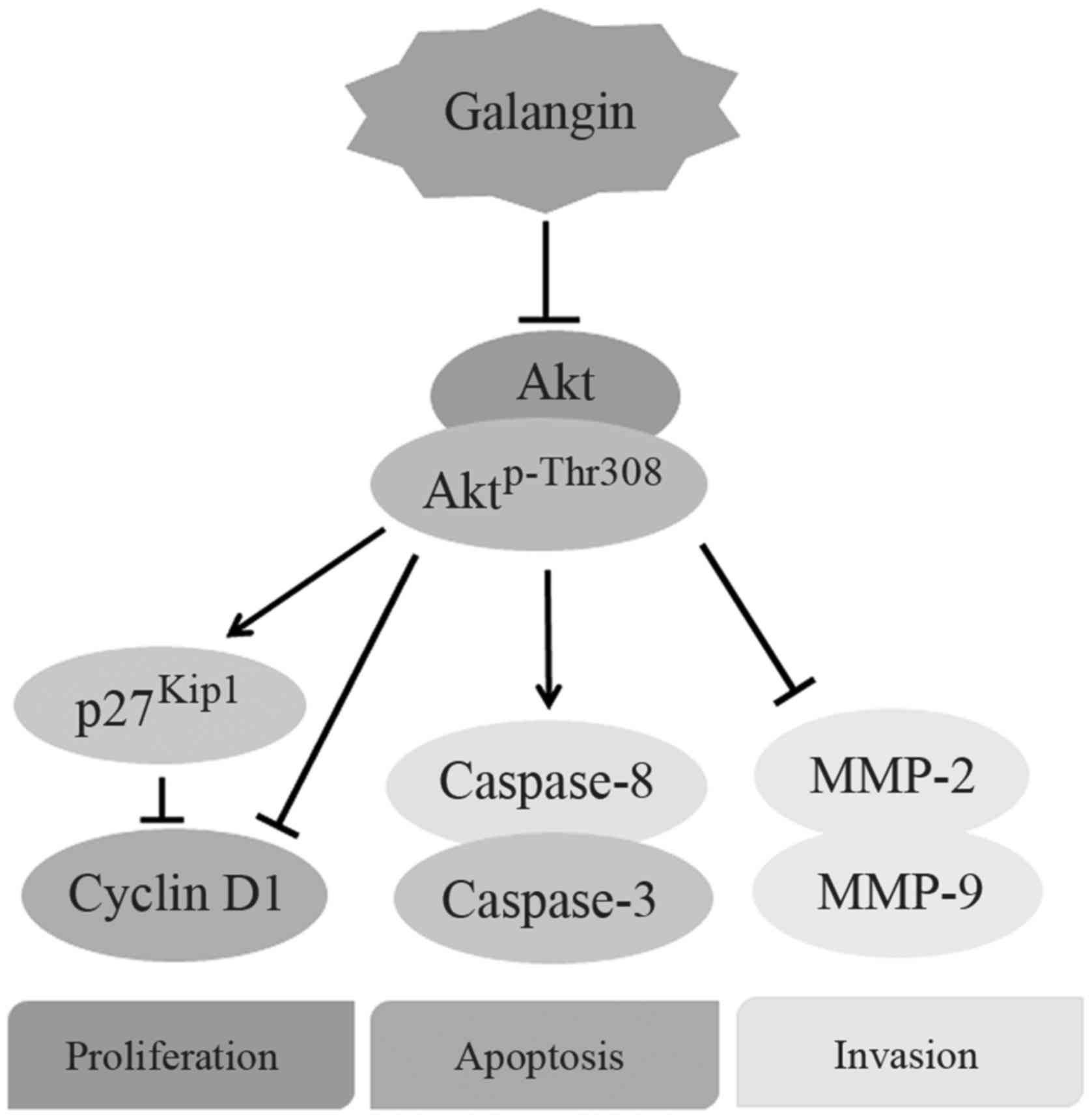|
1
|
Picci P: Osteosarcoma (osteogenic
sarcoma). Orphanet J Rare Dis. 2:62007. View Article : Google Scholar : PubMed/NCBI
|
|
2
|
Chou AJ, Geller DS and Gorlick R: Therapy
for osteosarcoma: Where do we go from here? Paediatr Drugs.
10:315–327. 2008. View Article : Google Scholar : PubMed/NCBI
|
|
3
|
Yu C and Wang W: Relationship between p15
gene mutation and formation and metastasis of malignant
osteosarcoma. Med Sci Monit. 22:656–661. 2016. View Article : Google Scholar : PubMed/NCBI
|
|
4
|
Allison DC, Carney SC, Ahlmann ER,
Hendifar A, Chawla S, Fedenko A, Angeles C and Menendez LR: A
meta-analysis of osteosarcoma outcomes in the modern medical era.
Sarcoma. 2012:7048722012. View Article : Google Scholar : PubMed/NCBI
|
|
5
|
Robl B, Pauli C, Botter SM,
Bode-Lesniewska B and Fuchs B: Prognostic value of tumor
suppressors in osteosarcoma before and after neoadjuvant
chemotherapy. BMC Cancer. 15:3792015. View Article : Google Scholar : PubMed/NCBI
|
|
6
|
Guo W, Healey JH, Meyers PA, Ladanyi M,
Huvos AG, Bertino JR and Gorlick R: Mechanisms of methotrexate
resistance in osteosarcoma. Clin Cancer Res. 5:621–627.
1999.PubMed/NCBI
|
|
7
|
Zhang Z, Zhang Y, Lv J and Wang J: The
survivin suppressant YM155 reverses doxorubicin resistance in
osteosarcoma. Int J Clin Exp Med. 8:18032–18040. 2015.PubMed/NCBI
|
|
8
|
Jung YC, Kim ME, Yoon JH, Park PR, Youn
HY, Lee HW and Lee JS: Anti-inflammatory effects of galangin on
lipopolysaccharide-activated macrophages via ERK and NF-κB pathway
regulation. Immunopharmacol Immunotoxicol. 36:426–432. 2014.
View Article : Google Scholar : PubMed/NCBI
|
|
9
|
Zha WJ, Qian Y, Shen Y, Du Q, Chen FF, Wu
ZZ, Li X and Huang M: Galangin abrogates ovalbumin-induced airway
inflammation via negative regulation of NF-kappaB. Evid Based
Complement Alternat Med. 767689:20132013.
|
|
10
|
Cushnie TP and Lamb AJ: Assessment of the
antibacterial activity of galangin against 4-quinolone resistant
strains of Staphylococcus aureus. Phytomedicine. 13:187–191. 2006.
View Article : Google Scholar : PubMed/NCBI
|
|
11
|
Pepeljnjak S and Kosalec I: Galangin
expresses bactericidal activity against multiple-resistant
bacteria: MRSA, Enterococcus spp. and Pseudomonas aeruginosa. FEMS
Microbiol Lett. 240:111–116. 2004. View Article : Google Scholar
|
|
12
|
Meyer JJ, Afolayan AJ, Taylor MB and
Erasmus D: Antiviral activity of galangin isolated from the aerial
parts of Helichrysum aureonitens. J Ethnopharmacol. 56:165–169.
1997. View Article : Google Scholar : PubMed/NCBI
|
|
13
|
Han MA, Lee DH, Woo SM, Seo BR, Min KJ,
Kim S, Park JW, Kim SH, Choi YH and Kwon TK: Galangin sensitizes
TRAIL-induced apoptosis through down-regulation of anti-apoptotic
proteins in renal carcinoma Caki cells. Sci Rep. 6:186422016.
View Article : Google Scholar : PubMed/NCBI
|
|
14
|
Su L, Chen X, Wu J, Lin B, Zhang H, Lan L
and Luo H: Galangin inhibits proliferation of hepatocellular
carcinoma cells by inducing endoplasmic reticulum stress. Food Chem
Toxicol. 62:810–816. 2013. View Article : Google Scholar : PubMed/NCBI
|
|
15
|
Choi YJ, Lee YH and Lee ST: Galangin and
kaempferol suppress phorbol-12-myristate-13-acetate-induced matrix
metalloproteinase-9 expression in human fibrosarcoma HT-1080 cells.
Mol Cells. 38:151–155. 2015. View Article : Google Scholar : PubMed/NCBI
|
|
16
|
Zhu L, Luo Q, Bi J, Ding J, Ge S and Chen
F: Galangin inhibits growth of human head and neck squamous
carcinoma cells in vitro and in vivo. Chem Biol Interact.
224:149–156. 2014. View Article : Google Scholar : PubMed/NCBI
|
|
17
|
Li X, Huang T, Jiang G, Gong W, Qian H and
Zou C: Synergistic apoptotic effect of crocin and cisplatin on
osteosarcoma cells via caspase induced apoptosis. Toxicol Lett.
221:197–204. 2013. View Article : Google Scholar : PubMed/NCBI
|
|
18
|
Cao J, Wang H, Chen F, Fang J, Xu A, Xi W,
Zhang S, Wu G and Wang Z: Galangin inhibits cell invasion by
suppressing the epithelial-mesenchymal transition and inducing
apoptosis in renal cell carcinoma. Mol Med Rep. 13:4238–4244.
2016.PubMed/NCBI
|
|
19
|
Ha TK, Kim ME, Yoon JH, Bae SJ, Yeom J and
Lee JS: Galangin induces human colon cancer cell death via the
mitochondrial dysfunction and caspase-dependent pathway. Exp Biol
Med (Maywood). 238:1047–1054. 2013. View Article : Google Scholar : PubMed/NCBI
|
|
20
|
Tian F, Ding D and Li D: Fangchinoline
targets PI3K and suppresses PI3K/AKT signaling pathway in SGC7901
cells. Int J Oncol. 46:2355–2363. 2015.PubMed/NCBI
|
|
21
|
Chen ZH and Feng B: Effect of the change
of caspase-3 activity on the neoadjuvant chemotherapy-induced
apoptosis of large-intestinal carcinoma cells. Hunan Yi Ke Da Xue
Xue Bao. 28:117–120. 2003.(in Chinese). PubMed/NCBI
|
|
22
|
Resnitzky D and Reed SI: Different roles
for cyclins D1 and E in regulation of the G1-to-S transition. Mol
Cell Biol. 15:3463–3469. 1995. View Article : Google Scholar : PubMed/NCBI
|
|
23
|
Chien ST, Shi MD, Lee YC, Te CC and Shih
YW: Galangin, a novel dietary flavonoid, attenuates metastatic
feature via PKC/ERK signaling pathway in TPA-treated liver cancer
HepG2 cells. Cancer Cell Int. 15:152015. View Article : Google Scholar : PubMed/NCBI
|
|
24
|
Chen F, Tan YF, Li HL, Qin ZM, Cai HD, Lai
WY, Zhang XP, Li YH, Guan WW, Li YB, et al: Differential systemic
exposure to galangin after oral and intravenous administration to
rats. Chem Cent J. 9:142015. View Article : Google Scholar : PubMed/NCBI
|
|
25
|
Feng WH, Zhang HH, Zhang Y, Sun M and Niu
JL: Determination of galangin in rat plasma by UPLC and
pharmacokinetic study. J Chromatogr B Analyt Technol Biomed Life
Sci 998–999. 26–30. 2015. View Article : Google Scholar
|















